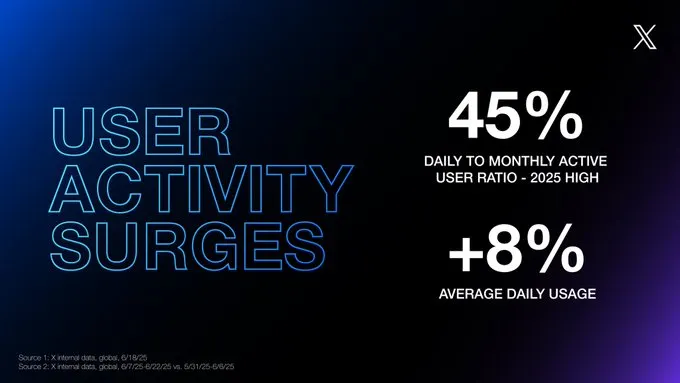Excellent ROG Azoth Extreme keyboard probably costs more than your graphics card
The Asus ROG Azoth Extreme wears its name proudly with one of the most premium designs I've ever seen, but its price is almost impossible to stomach.


Asus ROG Azoth Extreme
MSRP $500.00
Pros
Exceptional typing feel Support for 8,000Hz polling rate Adjustable gasket mount Useful OLED displayCons
Outrageously expensive Keycaps would be the first thing to replaceYou won’t mistake the Asus ROG Azoth Extreme for any other keyboard. Even before you cut the black tape holding the box closed, you’ll know that you’re getting a premium product.
From unboxing to setup to the first keystroke, the Azoth Extreme feels like the best gaming keyboard Asus has ever made — and at a price of $500, it damn well better be. You could pick up an RTX 4070 or RX 7800 XT graphics card for that much. This is the Extreme version of an already expensive gaming keyboard, which makes it feel more like a novelty than a halo product.
The original ROG Azoth was a major step forward for mainstream keyboards, and although the Azoth Extreme doesn’t take that same bold step, it ups the ante on the original design in just about every way. This is the closest I’ve seen a mainstream keyboard get to the niche enthusiast options, and with some clear advantages in tow. But when your keyboard costs as much as a high-end graphics card, it’s hard to justify the cost.
A premium fit
 Jacob Roach / Digital Trends
Jacob Roach / Digital TrendsThe Azoth Extreme looks very similar to the original Azoth, but with just enough flourishes to set it apart. For starters, you’re getting a 75% layout, which is the darling layout of enthusiast keyboards, from the Glorious GMMK Pro to the Meletrix Boog75. The big change here compared to the original is a fully aluminum shell. The keyboard is still separated into two pieces, but Asus is using aluminum all around the body now.
It may sound like a few minor cosmetic changes, but the original Azoth feels like a toy next to the Azoth Extreme. This version is nearly twice as a heavy. It comes in at 4.9 pounds while the original was 2.6 pounds. There’s clearly higher-quality materials at work with the Azoth Extreme, both externally and internally.
Internally, you’re getting a carbon fiber switch plate, along with three layers of sound dampening. There are two layers of Poron foam between the switch plate and PCB, as well as an additional silicone pad under the PCB. If you want a softer typing feel and a different sound profile, you can remove the silicon pad as well.
 Jacob Roach / Digital Trends
Jacob Roach / Digital TrendsAlthough the changes internally are big, there are some external differences as well. Most notably, Asus includes two sets of metal feet, replacing the plastic tabs you’ll find on the original Azoth. These are magnetic, and you’ll have to click them in individually, but you definitely won’t accidentally snap them off.
Asus also includes a large silicone wrist rest, which was one of the key omissions from the original design. You can always buy an aftermarket wrist rest, but the one Asus includes is deep and hefty. It’s not magnetic, but it feels magnetic with how effortlessly it conforms to the design of the Azoth Extreme and stays firmly locked in place.
Going above and beyond
 Jacob Roach / Digital Trends
Jacob Roach / Digital TrendsThe first thing you’ll notice on the Azoth Extreme is the new OLED display. Unlike the original design, it’s a full-color OLED, which defaults to a flashy ROG animation that shows you what it’s capable of. I’m wrapping the OLED display into this section on features because it actually brings additional functionality to the Azoth Extreme. That’s because it’s an OLED touchscreen.
Through Asus’ Armoury Crate software, you’re given a handful of categories — animation, date and time, laptop battery, hardware information, and keystrokes per second (KPS). You can swipe through different displays in these categories using the OLED display. For example, the hardware information allows you to go through CPU temperature, frequency, and voltage, all without poking back into Armoury Crate.
Joining the main screen are a list of indicators on both sides of the display, which show details like your battery life, connection status, and if you have caps lock on or not. A double tap dismisses these indicators. On the right side, you’ll also see an icon displaying what the control knob on the side of the keyboard is adjusting.
 Jacob Roach / Digital Trends
Jacob Roach / Digital TrendsLike the original Azoth, this knob unlocks media controls, brightness adjustment, and lighting effects directly on the keyboard. Pressing the side of the knob will cycle through the different options, and there are controls for pressing the top of the knob, flicking it up, and flicking it down.
The OLED screen is great, but what really stands out on the Azoth Extreme is the adjustable gasket. There’s a toggle on the bottom of the keyboard that will alternate between a softer or more stiff typing feel. The difference is surprisingly subtle, but you’ll notice it after using the keyboard for an extended period of time. I started with the Hard setting while playing games, appreciating the more responsive feel, but after slamming away at the keyboard for a few hours while typing, I switched to the more comfortable Soft setting. You could never touch the toggle and the Azoth Extreme holds up, but if you’re tuned into the subtle differences in feel — particularly if you’re switching between gaming and typing a lot — the adjustable gasket makes a difference.
 Jacob Roach / Digital Trends
Jacob Roach / Digital TrendsThe adjustable gasket and OLED display take center stage, but there are a couple of smaller features here, too. The Azoth Extreme debuts Asus’ range extender, which takes an Omni receiver and enables an 8,000Hz polling rate wirelessly. You don’t need an 8,000Hz polling rate, but I’m glad to see it here considering the price of the Azoth Extreme. In addition, Asus bundled in a dedicated Copilot key. This is the first gaming keyboard I’ve seen with the Copilot key, which is mapped to bring up Copilot out of the box. If you don’t care about Microsoft’s AI assistant, Asus includes an extra keycap in the box, and you can rebind the key in Armoury Crate.
A perfect feel
It shouldn’t come as a surprise, but the Azoth Extreme feels excellent. It feels even better than the Azoth, and it’s the first gaming keyboard I’ve tried that could easily replace my Meletrix Boog75 for extended typing sessions. What stood out most was the adjustable gasket, however. I thought this would be a set it and forget it feature, but I found myself switching between the different modes constantly depending on if I was typing or gaming.
 Jacob Roach / Digital Trends
Jacob Roach / Digital TrendsAgain, the Azoth Extreme would still feel great without the adjustable gasket, but you start picking up on subtle differences after using one mode or the other for several hours. It’s not the force you exert on the keys to type, or even the sound you get when slamming away. The adjustable gasket impacts the feeling in between. It sits somewhere between when you press the key and when it bottoms out, and your fingers slowly start to pick up on the differences between the two modes.
As with the original Azoth, you’re free to customize the keyboard to your liking. You can replace the keycaps, of course, but the key switches are also hot-swappable. I normally swap in some Akko Wine Red switches, but I really didn’t need to on the Azoth Extreme. My review unit came with Asus ROG NX Snow switches, which are a linear switch that debuted on the Asus ROG Strix Scope II 96. They feel great, and a big part of that comes down to the fact that they’re lubricated out of the box.
Asus also offers its NX Storm switch, which is a much heavier tactile option. I wasn’t able to test this switch, but it also comes lubricated from the factory. Regardless of which switch you choose, they use a box-style stem, reducing key wobble.
 Jacob Roach / Digital Trends
Jacob Roach / Digital TrendsThe included caps also work to reduce wobble. They come with a shorter stem, allowing the switch to occupy the full space inside the keycap. Even with that, I would swap these keycaps out. Asus uses a textured finish on the top of the keycap that I don’t love, especially after months of using a set of premium Osume keycaps.
The keycaps certainly aren’t bad, though. They’re double-shot PBT, so they should hold up for a long time, and they have transparent legends to let the per-key RGB lighting shine through. Asus also reduced the size of the raised indicator on the W key, which has been a consistent annoyance on previous Asus keyboards.
Between two gasket modes, a ton of sound dampening, premium switches, stabilizers, and the carbon fiber switch plate, the Azoth Extreme is about as premium as it gets. The real story here is customization, however. You get an incredible foundation with the Azoth Extreme, and it will help just about any switches and keycaps sing.
Going wireless
 Jacob Roach / Digital Trends
Jacob Roach / Digital TrendsOne of the major features of the original Azoth was wireless. Prior to that point, it was hard to find such a premium gaming keyboard that supported low-latency wireless. That remains true today, though keyboards like the Keychron Q1 HE have started to close the gap. Regardless, wireless is a major selling point of the Azoth Extreme.
The keyboard supports 2.4GHz wireless with the included Asus Omni receiver, as well as Bluetooth with up to three paired devices. While you’re charging, you can run the keyboard in wired mode as well. Asus includes its extender in the box for an 8,000Hz polling rate, though you’re free to run the Azoth Extreme with just the Omni dongle at a 1,000Hz polling rate if you want.
The higher polling rate certainly hits battery life. While the original Azoth could last over 2,000 hours, the Azoth Extreme lasts 1,600, and that’s with the OLED display and RGB lighting turned off. You’re not going to need to charge the Azoth Extreme often, but it’s still less battery life than what you get with the original model.
Should you buy the ROG Azoth Extreme?
 Jacob Roach / Digital Trends
Jacob Roach / Digital TrendsAt $500, you shouldn’t buy the ROG Azoth Extreme unless you’re comfortable blowing that kind of money on a keyboard. I’m a certified keyboard nerd, and I wouldn’t spend $500 on it. That has nothing to do with the quality of the keyboard. At that price, it’s too expensive to flat-out recommend, even if it could tell you good morning and give you a back rub.
From the carbon fiber switch plate to the wrist rest that’s reinforced with an aluminum center to the full-color OLED display, it certainly feels like Asus is going the extra mile to make the ROG Azoth Extreme justify its $500 price. As luxurious as all the niceties are, it doesn’t change the fact that you can get a keyboard that feels and functions as well as the Azoth Extreme does for hundreds of dollars less in many cases.
I suspect the price will drop. The question is how low the price will need to go. At $400, the ROG Azoth Extreme is worth a recommendation, keeping in mind that it’s still wildly expensive for a gaming keyboard. My hope is that it would eventually come in around $350. At that price, the ROG Azoth Extreme is still priced like a premium product, but in a way that makes sense given the crop of gaming keyboard available between $200 and $300.
There are lots of great enthusiast options out there that make the Azoth Extreme look overpriced. That includes the Meletrix Zoom 75 for around $250, high-end keyboards like the Glorious GMMK Pro for around $350, and plenty of options from Keychron that support wireless if you’re willing to settle for a plastic shell. It’s true that there isn’t another keyboard that does quite everything that the ROG Azoth Extreme does, but that doesn’t necessarily mean the $500 price tag makes sense given what you’d normally spend on a gaming keyboard.
If the price does drop, I’ll revisit this review. For now, the ROG Azoth Extreme is only worth picking up if you’re one of the few buyers in a position to spend $500 on a keyboard. For everyone else, don’t worry about saving up. You can get something that feels similarly premium for hundreds of dollars less.

 Kass
Kass 































